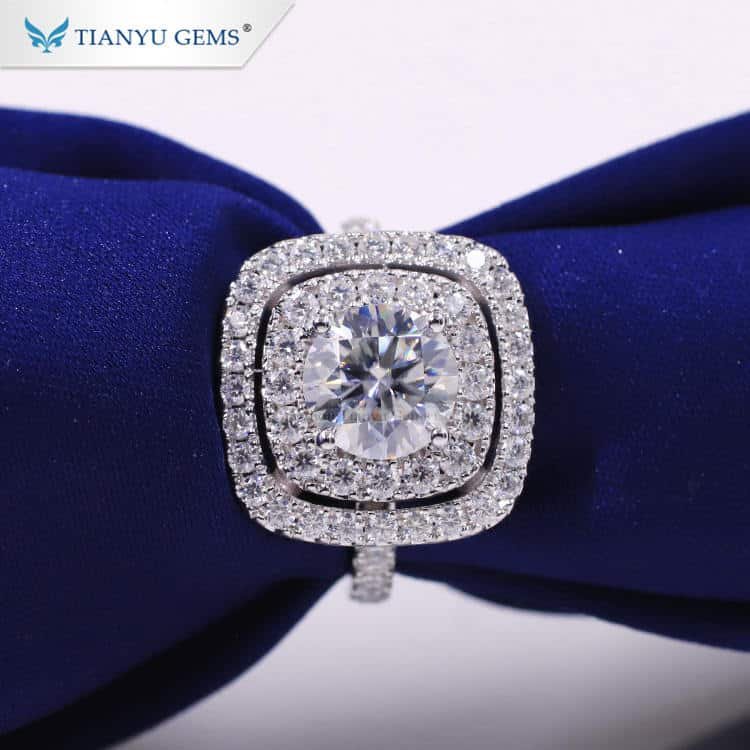- If you’re interested in buying a diamond, you’re probably also interested in knowing about lab-created diamonds. With a growing presence in the market, lab-created gems are becoming more popular as an alternative to mined diamonds. But how much do you really know about them? Here are some facts and tips that will help you learn more about lab-created diamonds and whether they’re right for your situation.
- 1. What is a lab-created diamond and how does it differ from a mined diamond?
- It’s a real diamond formed in a laboratory. Lab-created diamonds are actually real diamonds. The only difference between the two is they’re made in a lab instead of mined from the earth. Lab-created diamonds are made from a carbon seed that’s bombarded with high pressure and high temperature to form a diamond.It’s a natural process that involves very high temperatures and ruthless tests to ensure the diamonds are as pure as possible. The diamond layer is created in a proprietary process and placed into a quartz gemstone. The other difference is that lab-created diamonds are typically more expensive than mined diamonds and come with traditional specifications. Each diamond must pass a rigorous quality test that involves melting it, stress testing it in water, and looking for flaws. Check out our tips for identifying whether a particular lab-created diamond is worth buying and whether your relationship with it should be a long-term one.
- How do they compare to mined diamonds?Lab-created diamonds are considered to be of equal value to the precious stones they’re imputing. The only significant difference is that lab-created diamonds pass multiple tests to ensure they’re perfect. Because of the certification process, you definitely get more bang for your buck with a lab-created ring. Says jewelry expert Christy Pappas:
- “With a lab-created diamond, there are a few more metrics that determine their price. Although this is not a big deal to consumers that just want to “pick up a turd,” some serious enthusiasts can find that they “pay” hundreds or thousands of dollars more for something that looks identical to a mined diamond. However, because they’re lab created, the jewelry pieces can be subjected to more intense testing and can take up to six weeks to complete before hitting the market.”
- It’s not often that people who sell diamonds get to personally inspect the samples before they hit the market. Such inspections aren’t necessary as part of the certification process, like you may get when buying a used car.
- 2. How are lab-created diamonds made?
- Lab-created diamonds have the same chemical composition as naturally occurring diamonds, but they’re created in a lab. They are real diamonds—not fake ones! They’re also known as synthetic diamonds, man-made diamonds, or cultured diamonds. The process to create a lab-created diamond starts with a real diamond.Diamonds are formed when lithium ions trapped in resin are chemically reacted with carbon dioxide in a liquid hydrocarbon bath. The latter reacts with hydrogen cyanide to form diamond crystals. But whether or not diamonds are made from such processes is up to the lab. There are several methods for removing the impurities that make them not naturally or naturally formed. For example, hydrothermal processes remove carbon from the diamond, while chemical treatments dissolve the carbon, leaving behind the lithium and hydrogen cyanide.
- The chemical composition of a diamond is determined by the minerals that comprise it. The elements that make up a diamond’s crystal lattice include carbon, hydrogen, oxygen, sulfur, silicon, and oxygen. The crystal structure determines its color, hardness, and more. Because they’re made of natural materials, lab-created diamonds are sometimes confused with diamonds. However, while the mineral makeup may be the same, there are some key differences. Lab-created diamonds can contain impurities such as arsenic, cobalt, or lead. This is why labs don’t use these elements to create traditional diamonds. (According to Wikipedia, pure diamonds contain only one type of impurity—the precious element neodymium.) Because a variety of techniques are used to retrieve the minerals that comprise the diamond, the color balance, luster, and other aspects of the gem may differ. However, regardless of these variances, a diamond is still a diamond. It’s possible to buy diamonds that resemble lab-created diamonds in color and clarity, but they are not fully natural.
- What’s notable about lab-created diamonds is that attributes long associated with diamonds may have been lost in the process. For example, the chemical makeup of a natural diamond depends on the amount of iron present within it.
- 3. What are the benefits of buying a lab-created diamond?
- There are several benefits to purchasing a lab-created diamond. One, you can get the same look as a mined diamond but at a fraction of the price. Two, you can purchase a larger diamond than you could afford otherwise. Three, a lab-created diamond is eco-friendly since it’s not mined from the earth.Lab-created diamonds are produced by chemical processes rather than in the earth. Mine companies have to deal with high temperatures and the corroding of their workings to be able to extract diamonds from their bodies. But in contrast, chemical processes can create diamonds much more easily.
- According to Gemological Science, the process involves heating Magnesium silicates and chromites with hydrofluoric acid (HF). With the acid, any dissolved minerals are dissolved, which increases their acidity and speeds the dissolving process. The resulting crystals are left as magmatic diamonds.
- A “mineral free” diamond is one that doesn’t contain any minerals, including carbon. The fact that it’s mostly carbon is what makes it shiny.
- The process also separates colorless gems. That makes them “precious” stones and attracts a higher price.
- Sterilization introduces impurities, preventing them from forming and random fixing. This makes it much harder for diamonds to be cut into perfect clumps. Lab-created kits contain purification tablets and special gels that can remove any impurities before cutting.
- Before lab-created diamonds are cut, they go through a soaking period in solutions containing common oxidizing agents. This robs the diamonds of their sparkle and reduces the possibility of them spontaneously forming.
- There are several advantages behind using lab-created diamonds. First, you can get the same color as a naturally-occurring diamond but at a fraction of the price. You can also go for a round cut instead of a square one. Third, it’s more eco-friendly since you don’t have to mine diamonds to get the desired sparkle.
- If you’re looking to buy a specific diamond, you can typically find data on how it compares against common stones of the same size.
- 4. Who makes lab-created diamonds and how does the process work?
- There are two ways that lab-created diamonds are made: The first is through a high-pressure, high-temperature process that’s similar to what happens in nature. The second method is through chemical vapour deposition (CVD) in which a carbon-containing gas is placed on the diamond substrate.Both methods offer advantages and drawbacks, so determine which one is the best fit for your specific purchase.
- 5. Are there any drawbacks to buying a lab-created diamond?
- Not really. Lab-created diamonds are made in a lab using the same processes that are used to make mined diamonds. Lab-created diamonds are cheaper and can be more environmentally friendly than mined diamonds.
- What Is a Lab-Created Gem?
- Lab-created gems are diamonds that are created in a lab using the same processes that are used to produce mined diamonds. These diamonds are typically sold at a discount, because they contain much less carbon, or hysteria, than mined diamonds do. Because they contain such little carbon, they are typically more environmentally friendly than mined diamonds.
- Compared to mined diamonds, lab-created diamonds are less carbon, and thus more environmentally friendly, than mined diamonds, according to the American Chemical Society (ACS).
- Lab-created diamonds have many benefits over mined diamonds. For one, they are known to deliver a higher level of color, brilliance and cut quality with less color, brilliance and cut-level of the mined diamond. That’s great if you want a natural-looking stone that’s worth more money-per-carat, but it comes at the cost of the diamond’s value. With mined diamonds, however, the value of a carat equals whatever the mine paid for it and whoever found it, regardless of whether they cut it or not. With lab-created diamonds, the value of a carat equals the amount of carbon dioxide and sulfur (roughly 5.4% and 1.3% respectively) that were used in the cutting. So, when cutting one, you’re actually getting the diamond value at a cheaper cost compared to revealing the mined value.
- Also, on the sustainability front, a lab-created diamond has a smaller carbon footprint than mined diamonds, because they are smaller in mass before being cut. When mined diamonds are introduced to the earth, they create so much carbon dioxide, sulfur and mined rock waste that the FSIS Environmental Forum ranks diamonds as the most carbon-intensive mineral product and diamond mining as the most polluting industry.

Bracelet Sizing 101: Everything You Need to Know about Getting the Right Fit
Are you tired of wearing bracelets that are too tight








